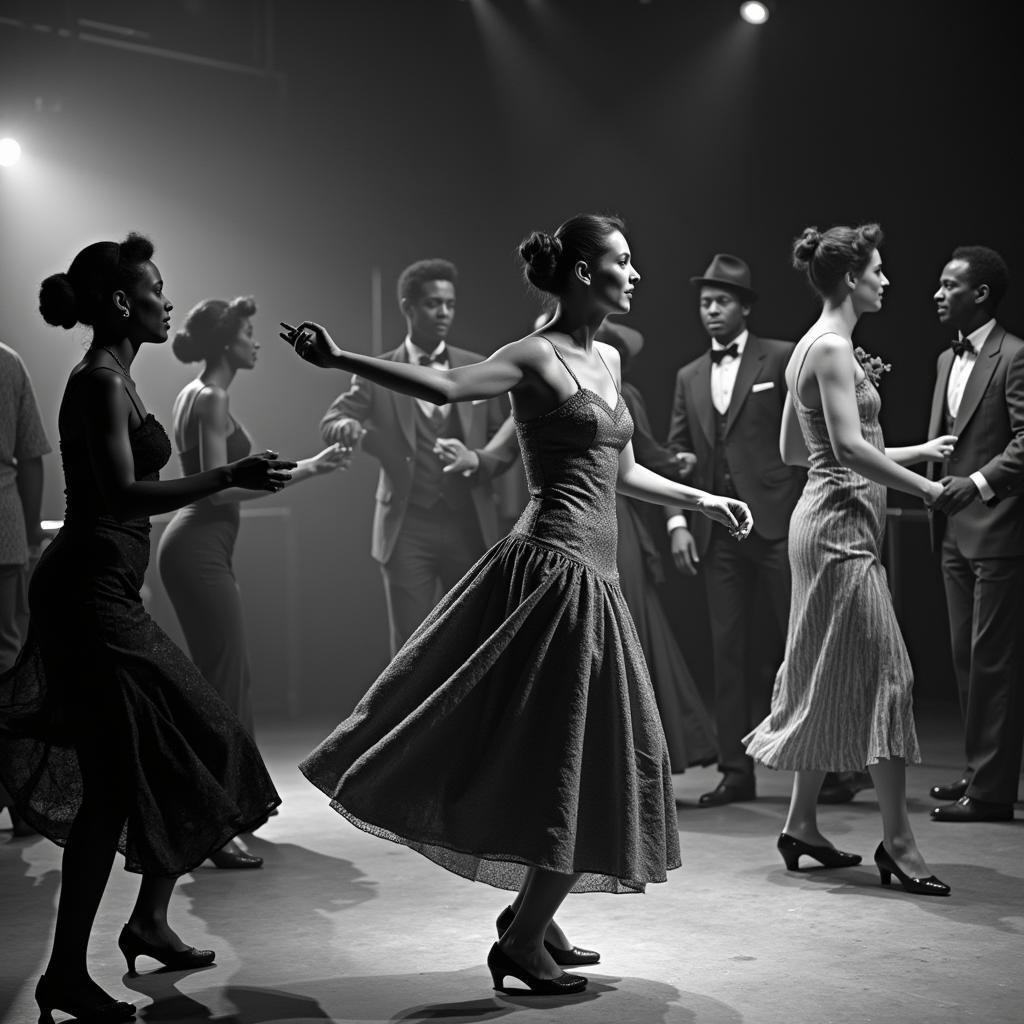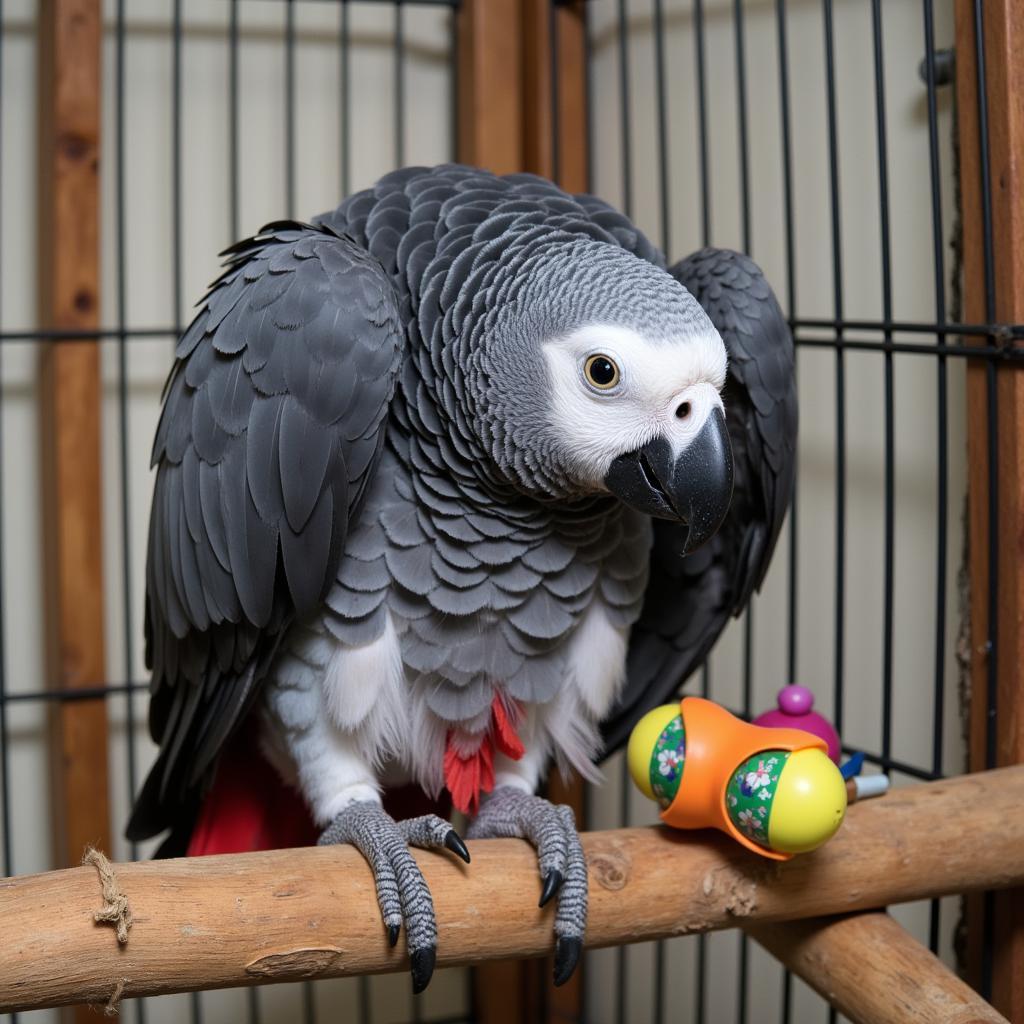A Timeline of African American Dance History
African American dance is a vibrant tapestry woven from centuries of tradition, resilience, and innovation. Its story begins in the heart of Africa, travels through the horrors of the transatlantic slave trade, and blossoms into a powerful form of expression that continues to captivate and inspire the world. This timeline explores the key moments and influential figures that shaped the evolution of African American dance.
The African Roots: A Foundation of Rhythm and Movement
Before stepping onto American soil, African dance served as a vital form of communication, spiritual expression, and communal celebration. West African dance, in particular, with its emphasis on polycentrism (moving different body parts independently) and polyrhythms (layering multiple rhythms), would lay the groundwork for many African American dance forms.  African Dance Ceremony
African Dance Ceremony
The Transatlantic Slave Trade: Preserving Heritage Through Oppression (16th -19th Century)
The transatlantic slave trade brought with it unimaginable suffering, but it could not extinguish the human spirit. Africans forcibly brought to America clung to their cultural practices, including dance. Though often suppressed, these dances became a source of solace, resistance, and a way to maintain a connection to their heritage. One such dance form, the “Ring Shout,” emerged during this period. Performed in a circle, the Ring Shout featured hand clapping, foot stomping, and a call-and-response structure, reflecting the influence of West African traditions.
Minstrelsy: A Complex and Troubling Era (19th Century)
The minstrel show, a form of entertainment popular in the 19th century, saw white performers wearing blackface and mimicking African American song and dance. While deeply racist and exploitative, minstrelsy ironically contributed to the development of African American dance. Black performers eventually entered minstrel troupes, bringing authenticity and innovation to these distorted portrayals. This era saw the rise of the cakewalk, a dance characterized by high-stepping and exaggerated movements that satirized white ballroom dances, ultimately becoming a precursor to ragtime and jazz dance.
The Birth of Jazz and the Jazz Age: From Ragtime to the Charleston (Early 20th Century)
The turn of the 20th century witnessed the birth of jazz music, and with it came a revolution in dance. Ragtime, with its syncopated rhythms and lively energy, paved the way for the Charleston, a dance craze that swept the nation during the Roaring Twenties. Characterized by its fast-paced footwork and swiveling movements, the Charleston embodied the free spirit of the Jazz Age. The Savoy Ballroom in Harlem, New York, became a legendary venue for jazz dance, attracting the likes of “Shorty” George Snowden, known for his acrobatic moves, and Norma Miller, the “Queen of Swing.”
 Harlem Renaissance Dance Performance
Harlem Renaissance Dance Performance
The Rise of Tap: A Fusion of Rhythms (Early 20th Century)
Tap dance emerged alongside jazz, drawing influences from African American and Irish step dancing. Early pioneers like Bill “Bojangles” Robinson captivated audiences with their intricate footwork and captivating rhythms. Tap dance continued to evolve through the decades, with legends such as the Nicholas Brothers pushing the boundaries with their acrobatic and synchronized routines.
The Civil Rights Movement and Beyond: Dance as a Tool for Social Change (Mid-20th Century – Present)
Dance became increasingly intertwined with the struggle for racial equality during the Civil Rights Movement. Alvin Ailey, a visionary choreographer, founded the Alvin Ailey American Dance Theater in 1958, showcasing the beauty and power of African American dance traditions while tackling themes of social justice. Katherine Dunham, an anthropologist and choreographer, also played a pivotal role, incorporating elements of Caribbean and African dance into her work and advocating for racial equality.
The Evolution Continues: Hip-hop, House, and Beyond (Late 20th Century – Present)
The late 20th century saw the birth of hip-hop culture, and with it came a wave of new dance forms. Breaking, popping, locking, and other street dance styles emerged from the streets of New York City, reflecting the creativity and resilience of marginalized communities. These dynamic and energetic dance forms continue to evolve, influencing global dance trends and serving as a powerful form of self-expression.
African American Dance: A Legacy of Innovation and Inspiration
The history of African American dance is a testament to the power of human resilience, creativity, and the enduring legacy of African culture. From the Ring Shout to hip-hop, each dance form reflects a unique chapter in the African American experience, shaping the cultural landscape of the United States and inspiring countless artists worldwide. As new generations of dancers continue to innovate and push boundaries, the future of African American dance promises to be just as vibrant and impactful as its rich history.  Contemporary African American Dance Performance
Contemporary African American Dance Performance
FAQ
1. What are some of the key characteristics of African American dance?
African American dance is often characterized by its strong rhythmic structures, improvisation, polycentrism (moving different body parts independently), and a focus on grounded movements. It often incorporates elements of storytelling, social commentary, and cultural expression.
2. How did African American dance change over time?
African American dance evolved significantly, influenced by historical events, social movements, and cultural exchange. From the early forms rooted in African traditions to the emergence of jazz, tap, and hip-hop, each era brought new innovations and adaptations, reflecting the changing social and artistic landscape.
3. What is the significance of the Savoy Ballroom in African American dance history?
Located in Harlem, New York, the Savoy Ballroom was a legendary venue during the Jazz Age. It was a place where people of all races could come together to dance and enjoy live music. The Savoy was known for its electrifying atmosphere and played a crucial role in popularizing jazz dance styles.
4. How has African American dance impacted global dance culture?
African American dance has had a profound impact on global dance culture. Styles like jazz, tap, and hip-hop have transcended geographical boundaries, inspiring dancers and choreographers worldwide. These forms continue to shape contemporary dance trends and remain a source of innovation and artistic exploration.
5. Where can I learn more about African American dance history?
Numerous resources are available, including books, documentaries, and online archives dedicated to African American dance. Visiting museums and cultural centers dedicated to African American history and art can also provide valuable insights.
Need More Information on African [African Chants Lyrics]?
We encourage you to explore our other articles on African culture and history. For any further assistance, please don’t hesitate to contact us.
Contact Us:
- Phone: +255768904061
- Email: kaka.mag@gmail.com
- Address: Mbarali DC Mawindi, Kangaga, Tanzania
Our customer service team is available 24/7 to assist you.
